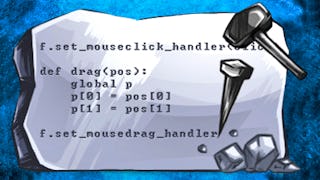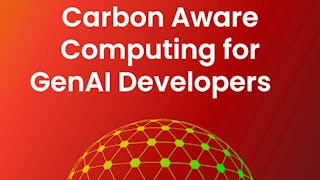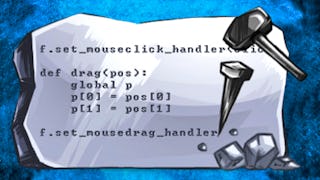This class provides a series of Python programming exercises intended to explore the use of numerical modeling in the Earth system and climate sciences. The scientific background for these models is presented in a companion class, Global Warming I: The Science and Modeling of Climate Change. This class assumes that you are new to Python programming (and this is indeed a great way to learn Python!), but that you will be able to pick up an elementary knowledge of Python syntax from another class or from on-line tutorials.
通过 Coursera Plus 解锁访问 10,000 多门课程。开始 7 天免费试用。


了解顶级公司的员工如何掌握热门技能

该课程共有5个模块
This class is intended to complement a Coursera class called Global Warming I: The Science and Modeling of Climate Change, which presents much of the background to the material here. In this class you'll be using spreadsheets (maybe) and Python (definitely) to do some simple numerical calculations on topics in Earth System Science. The model you'll be working on this week is based on material from Unit 3 of that class, called First Climate Model.
涵盖的内容
2个视频6篇阅读材料1个作业1个编程作业1次同伴评审
The ideas behind this model were explained in Unit 7, Feedbacks, in Part I of this class. First we get to generate simple linear "parameterization" functions of planetary albedo and the latitude to which ice forms (colder = lower latitude ice). Second, for any given value of the solar constant, L, we'll use iteration to find consistent values of albedo and T, to show the effect of the ice albedo feedback on Earth's temperature, running away to fall into the dreaded "snowball Earth".
涵盖的内容
1个视频3篇阅读材料1个作业1个编程作业1次同伴评审
Ice flows like extra-thick molasses, downhill. The shape of the ice sheet (altitude versus distance across) is determined by the relationship between ice surface slope and the flow rate of the ice.
涵盖的内容
1个视频3篇阅读材料1个作业1个编程作业1次同伴评审
Planetary rotation and fluid flow were explained in Part I of this class, Unit 6, on Weather and Climate.
涵盖的内容
1个视频1篇阅读材料2个作业3个编程作业1次同伴评审
Background for this model was presented in Part I of this class, Unit 9, The Perturbed Carbon Cycle.
涵盖的内容
1个视频4篇阅读材料1个作业1个编程作业1次同伴评审
位教师

从 Environmental Science and Sustainability 浏览更多内容
 状态:免费试用
状态:免费试用 状态:免费试用
状态:免费试用University of Colorado Boulder
 状态:免费
状态:免费DeepLearning.AI
 状态:免费试用
状态:免费试用
人们为什么选择 Coursera 来帮助自己实现职业发展




学生评论
55 条评论
- 5 stars
54.54%
- 4 stars
21.81%
- 3 stars
12.72%
- 2 stars
3.63%
- 1 star
7.27%
显示 3/55 个
已于 Jun 18, 2016审阅
Really good course. Short, content-filled lectures and practical application!
已于 Apr 13, 2020审阅
Great course for those who want to learn a little more about modelling, python and the climate!
已于 Feb 15, 2017审阅
I would love some more excercises, more modeling concepts. A great experience after all!
常见问题
To access the course materials, assignments and to earn a Certificate, you will need to purchase the Certificate experience when you enroll in a course. You can try a Free Trial instead, or apply for Financial Aid. The course may offer 'Full Course, No Certificate' instead. This option lets you see all course materials, submit required assessments, and get a final grade. This also means that you will not be able to purchase a Certificate experience.
When you purchase a Certificate you get access to all course materials, including graded assignments. Upon completing the course, your electronic Certificate will be added to your Accomplishments page - from there, you can print your Certificate or add it to your LinkedIn profile.
Yes. In select learning programs, you can apply for financial aid or a scholarship if you can’t afford the enrollment fee. If fin aid or scholarship is available for your learning program selection, you’ll find a link to apply on the description page.
更多问题
提供助学金,
¹ 本课程的部分作业采用 AI 评分。对于这些作业,将根据 Coursera 隐私声明使用您的数据。

